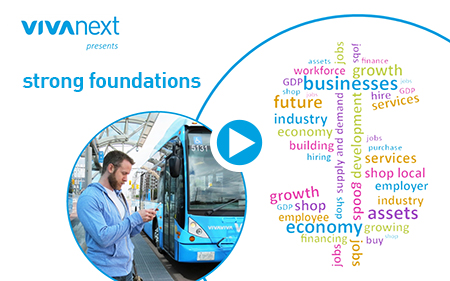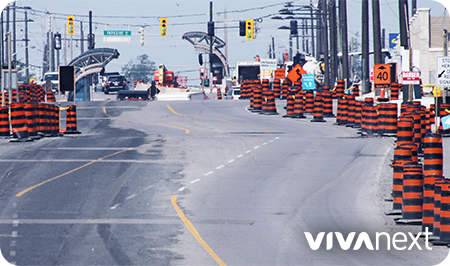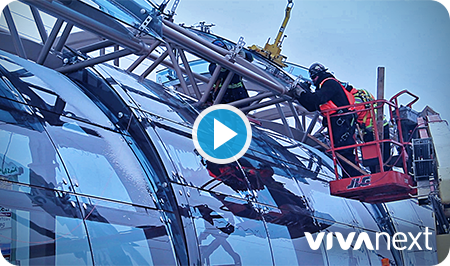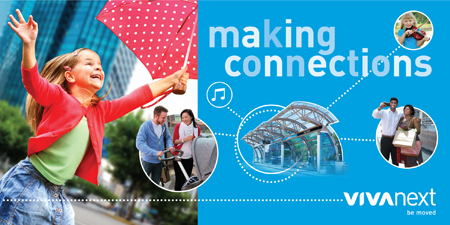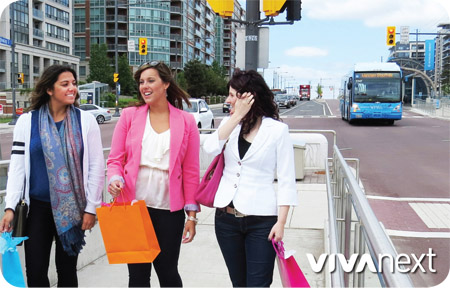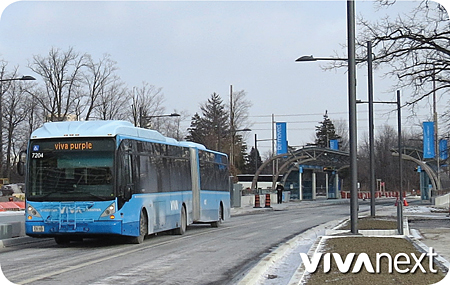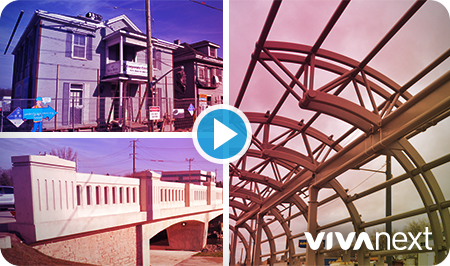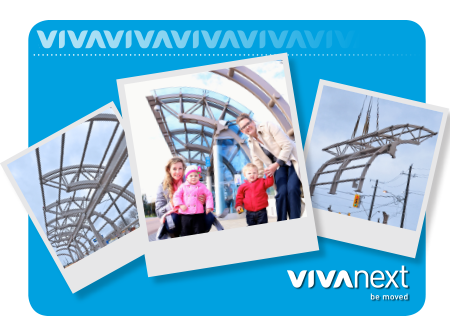
As 2014 draws to a close, we’re pleased to say that each of our projects saw great progress this year. The Bus Rapid Transit projects start and end at different times so each has its own construction schedule to match the unique challenges, such as: length of rapidway, complexity of underground work, and landscape and infrastructure features like hills and bridges. As we progress through these challenges we consider them milestones, and after a year of milestones there are plenty of moments to look back on.
On Highway 7 East in Markham, the second stretch of rapidway opened from Highway 404 to South Town Centre Boulevard, and construction will be complete on the last piece to Warden Avenue by the end of 2014, with some finishing touches to add in spring 2015. This final section allows Viva customers to experience the future of rapid transit in York Region, from Bayview Avenue in Richmond Hill to the Downtown Markham development area. Riders are already seeing up to 35% travel time savings on the rapidways.
In Newmarket on Davis Drive, utilities and telecommunications were relocated to prepare for road widening and building the rapidways in the centre of the road. Road widening continued and base-layer paving was also completed in sections along Davis. Significant milestones included: completing the structure of the Keith Bridge and reopening the Tom Taylor Trail, moving the Union Hotel into its final location and installing the steel structures for the first vivastation at Longford/Parkside. The glass canopies will be installed over the winter and the vivastations at Main Street and Southlake Hospital are also underway. It’s been a busy, messy year but crews are working quickly. We’re in the home stretch with the rapidway set to open December 2015.
Along Highway 7 West in Vaughan, the first phase of rapidways is well underway and a there has been a lot of progress in 2014. Between Jane Street and the CN Bridge, work continues on base-layer paving, building retaining walls and expanding the CN Bridge, and we’re almost done relocating some underground infrastructure. East of Jane Street, the road has been widened and traffic has been shifted, so that work in the centre of the road [including paving, installing vivastations platforms and canopies!] can begin in 2015. The contract for phase two of the rapidways in Vaughan will be awarded in 2015, adding dedicated bus lanes and vivastations from Edgeley Boulevard to Pine Valley Drive and from Bowes Road to Yonge Street [in blue on map]. While some pre-construction activities are already underway, construction is expected to begin in late 2015/early 2016.
On Yonge Street in Richmond Hill and Newmarket, the contractor is working to finalize the rapidway design and construction schedule. Meanwhile, crews are out conducting surveys and utility investigations to make sure we have an accurate record of what’s above and below the ground.
We’re also building a state-of-the-art Operations, Maintenance and Storage Facility in Richmond Hill to act as a ‘home base’ for transit. This nine-acre, 481,679 square foot facility will be LEED® certified [Leadership in Energy and Environmental Design], and is scheduled to be complete mid-2015.
Everyone’s busy making memories during the holidays, but we hope that you’ll have a few moments to see some of our videos that give you a sneak peak at rapid transit in York Region:
Where did it all begin? See the launch of curbside Viva service in 2005. Also see the vision for the transformation of York Region and some of the considerations given to the design of the rapidway vivastation, and take a peek inside the rapidway vivastations.
While you’re watching videos, why not find out what’s happening in your community:

